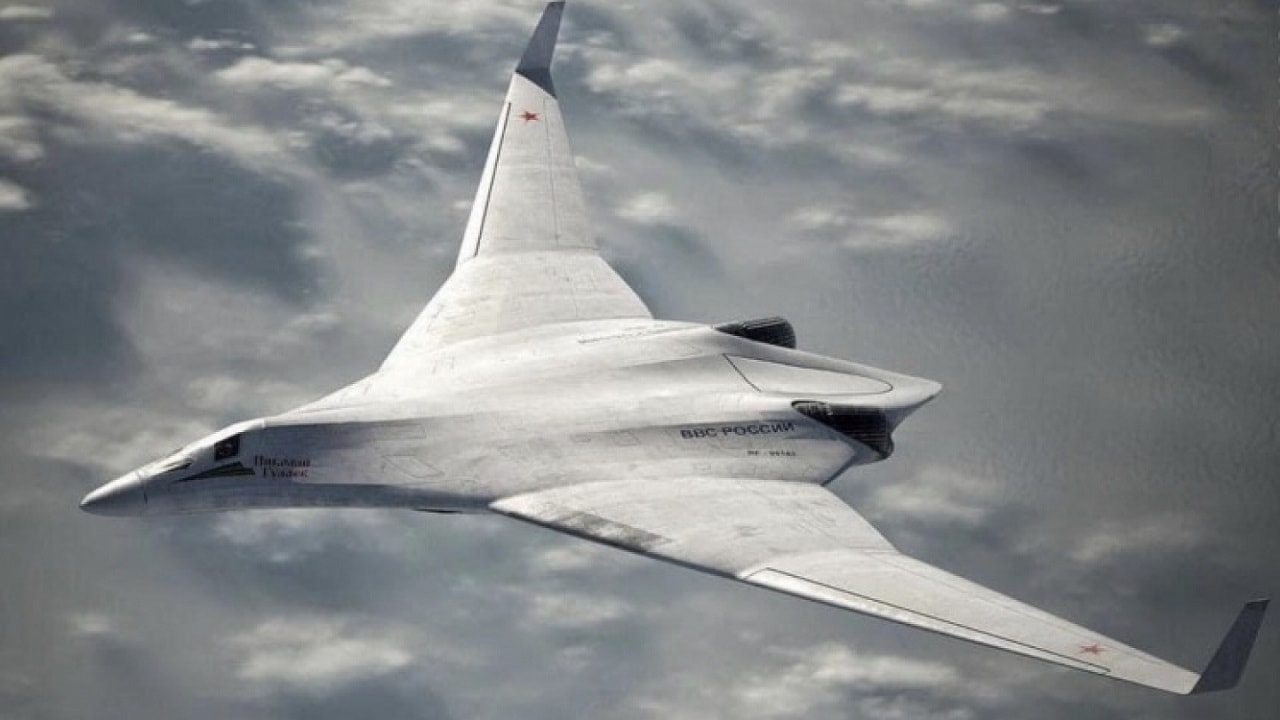PAK DA – How Russia Plans to Upgrade Its Bomber Force – The Russians often over-state their manufacture of new military hardware. They go from announcing prototypes to trumpeting production to a celebratory delivery to the troops – all in an overly-expedited fashion. It appears that their plans for a new stealth bomber called the PAK DA are caught up in various states of hype.
PAK DA: Is This Stealth Bomber Real?
Last summer, Russian state-run media said the PAK DA will be ready with a demo prototype by 2023. The announcement also referred to the planned stealth bomber as being surrounded by a network of drones and even able to launch a hypersonic weapon. This braggadocio has to be considered premature when there is not much evidence that the airplane is real.
The Russians Do Not Have the Best Stealth Technology
It stands to reason that the Russians want (or need) their own stealth bomber. The Americans have their B-21 Raider, and the Chinese have their H-20. The Russians are standing in third place in terms of the development of their own indigenously produced bomber with radar-evading characteristics.
Not Much is Known About the PAK DA
What we know about the PAK DA is limited. It is reportedly shaped like a flying wing when examining the latest artist rendering. The airplane is believed to be subsonic and will have an assortment of bombs, cruise missiles, and even hypersonic weapons in its payload. The full-size mockup is thought to be made of wood, which is another reason to be doubtful that the airplane will make it to a flying technology demonstrator any time soon.
Even the Russian Acquisition Leaders Are Less Than Certain
The Ministry of Industry and Trade of the Russian Federation Denis Manturov has gone on record about Russia’s stealth bomber program, and he remains vague.
When asked directly by Interfax about the sixth-generation PAK DA and how it will compare to the B-21, Manturov was cagey at best.
“As planned, a complex of experimental design work is being implemented. Together with the customer, the appearance of the aircraft was determined. In accordance with the contract and the master schedule, the stage-by-stage transfer of working design documentation to the manufacturer is underway. At the production site itself, the aggregate assembly of prototypes is underway. Of course, we set ourselves the task of creating technology that surpasses the technology of other countries in terms of capabilities,” he said.
This Thing Is Really Made of Wood Right Now?
The Russians believe that the wooden prototype will have better technology than the competition, which is easy to say and more difficult to execute. Their stealth capabilities are seen as behind the Americans and Chinese. The Russians may have small PAK DA models that are going through wind-tunnel testing. They also have to produce a new engine, which the acquisition leadership says is happening now. They have stated that the airplane will be ready for deployment by around 2027.
Five years to go from a wooden prototype with no completed engine could be a bridge too far. It is probably more likely the stealth bomber would not be ready until 2030. It is illustrative to examine the Russian stealth fighter program – the Su-57 – to predict how the PAK DA will fare.
A Sad Stealth History: It Took Two Decades To Develop a Stealth Fighter
Wondering why Russia has it tough when it comes to stealth technology? The Su-57 ‘stealth fighter’ program is a great example of Moscow’s stealth problems.
The Su-57 began development in 2002 and only 12 have been delivered to the Russian Air Force. So that is 20 years from research and development to delivery for the stealth fighter. Perhaps the Russians have learned more about stealth technology from the Su-57 program that can be transferred to the PAK DA, but that remains to be seen. Especially since the PAK DA prototype is now made of wood.
Transformation of Tactics
But it is likely that the Russians will continue work on the PAK DA. It could transform tactics for the Russian Air Force. A stealth bomber could evade NATO anti-aircraft systems or stay out of range and fire stand-off weapons to eliminate radar or command and control centers. The hypersonic weapon capability would make it valuable to the Russian aerial fleet. It could become nuclear-capable as well. The PAK DA could play “quarterback” and be connected to unmanned bombers and autonomous tankers to extend the bomber’s range.
And what if the PAK DA is not that stealthy at all and serves as a missile truck instead of flying over enemy air defense systems? Without radar-evading characteristics, the PAK DA would have a quicker acquisition cycle.
Could the Bomber Have a Bigger Payload Than American Bombers?
But the PAK DA may have a bigger payload than various American bombers such as the B-2 or B-1. It makes sense that the Russians would want a larger, strategic airplane. One thing the Russians could do is deploy the Kh-47M2 Kinzhal on the PAK DA. This is Russia’s hypersonic glide vehicle that can go MACH 10.
Alas, this is mostly speculation until the PAK DA program is developed further. It is too early to say now what the Russians will build. But if constructed by the end of the decade and put into service it does have advantages such as threatening NATO with stand-off missiles, evading radar in a contested environment, and launching hypersonic missiles.
But right now, it has to be considered more of a concept than a real airplane.
Now serving as 1945’s Defense and National Security Editor, Brent M. Eastwood, Ph.D., is the author of Humans, Machines, and Data: Future Trends in Warfare. He is an Emerging Threats expert and former U.S. Army Infantry officer. You can follow him on Twitter @BMEastwood.

